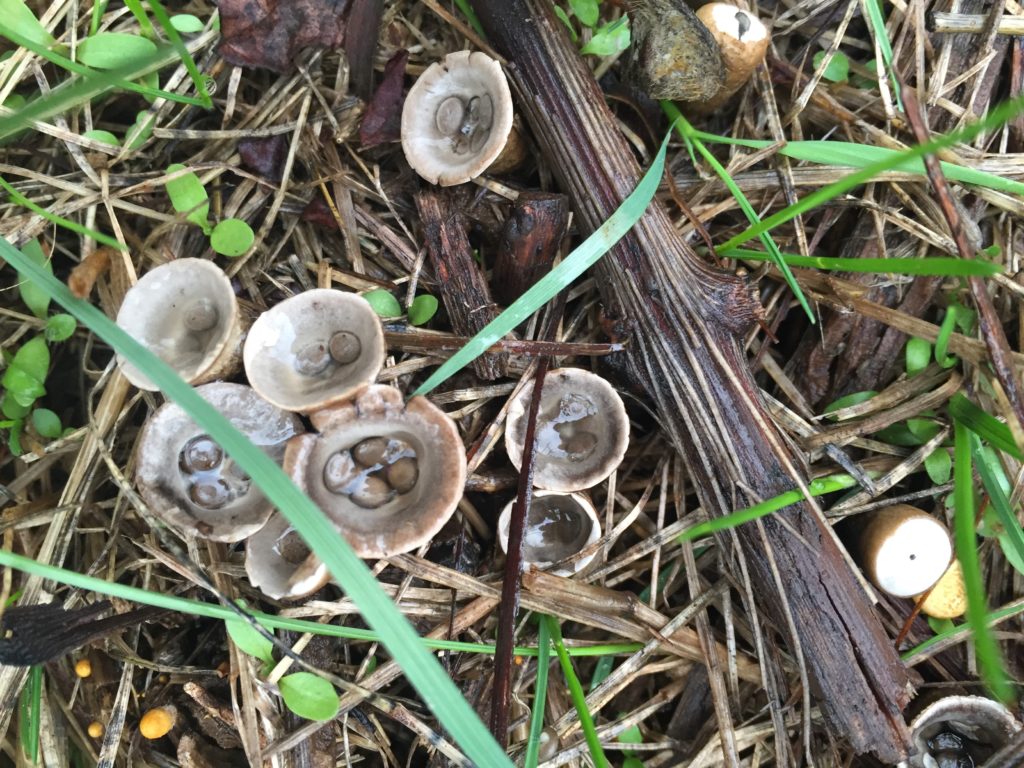Juxtaposed with the exuberance of spring, and the languidly long, warm, caramel colored summer nights that barely dip a toe in darkness before light brushes the mountains, and the frenetic energy and furious productivity of the harvest, winter can appear a hard stop. Amongst the seasons it is the metaphor for death, impenetrable, a mosaic of greys, stealing the last heat from our fevered harvest fingers, leaving them brittle and cracking. Even the second law of thermodynamics points toward a certain, cold end to the disequilibrium of energies that sustains life. We are therefore excused momentarily if we allow ourselves to pin the rap for all our dark reflections on the stoic season.
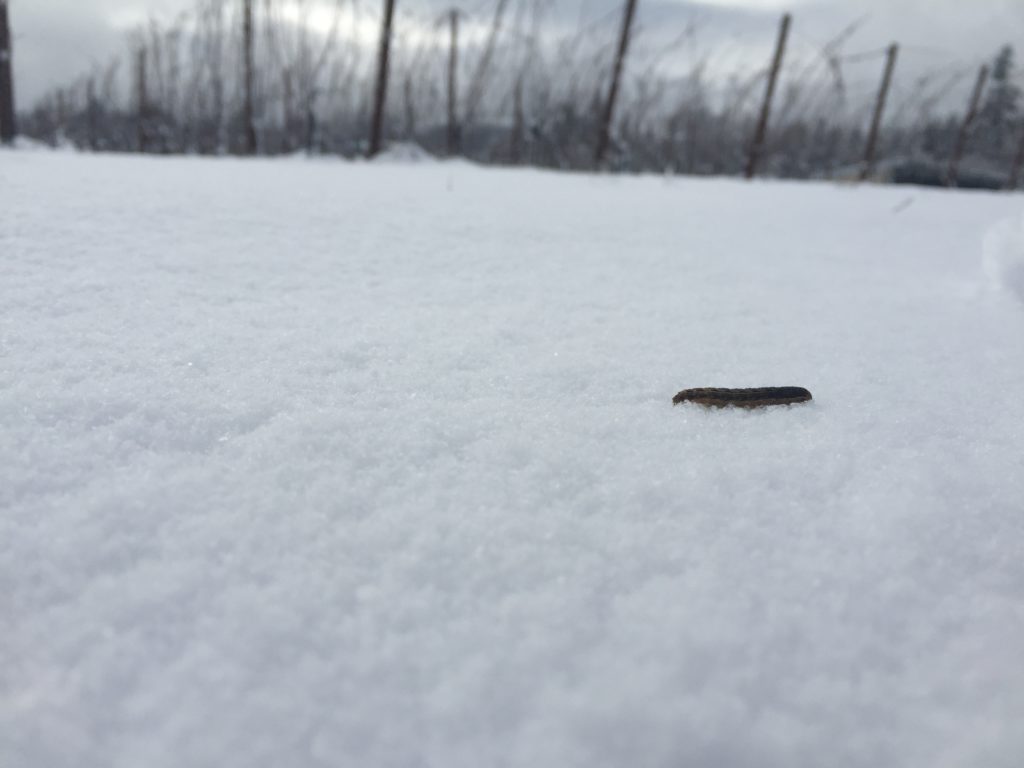
However understandable, this view of winter blinds us to her critical gifts. The promise of vitality and nourishment, of warm blood, the rebirth of the landscape, begins even as the previous year leans slowly and heavily into the arms of the earth. Winter gently receives and honors the dead and the dying, unraveling the stories of their lives into the letters that will be repurposed, rearranged and reread by every generation of every organism until our world itself gets recycled as our sun dies.
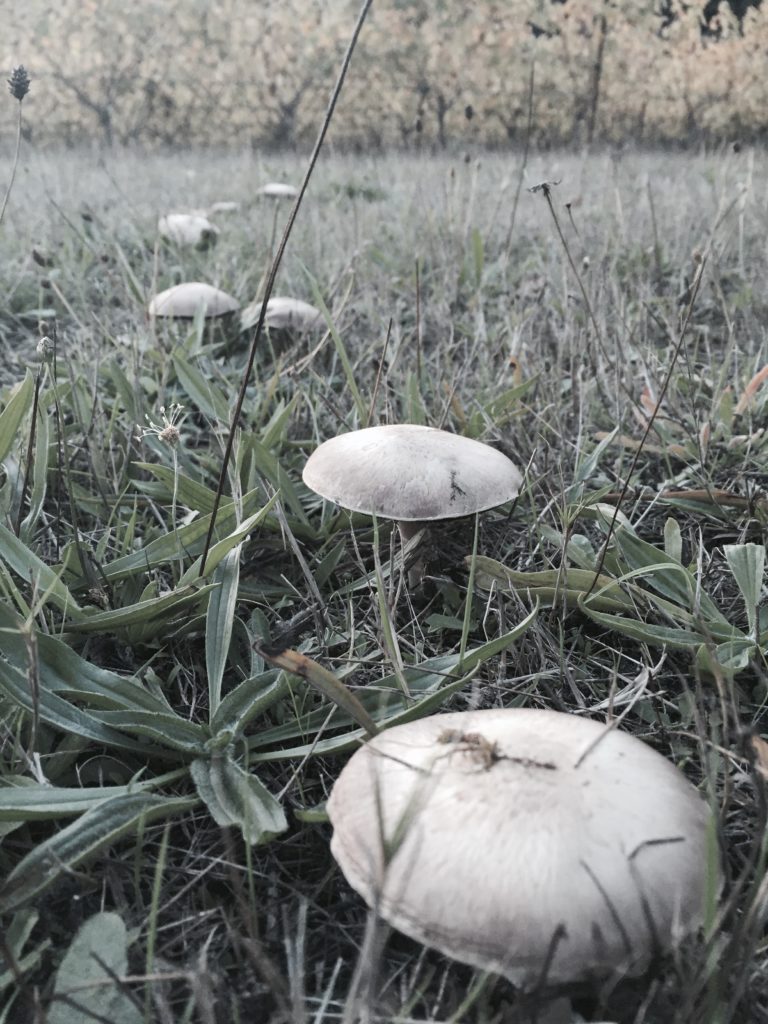
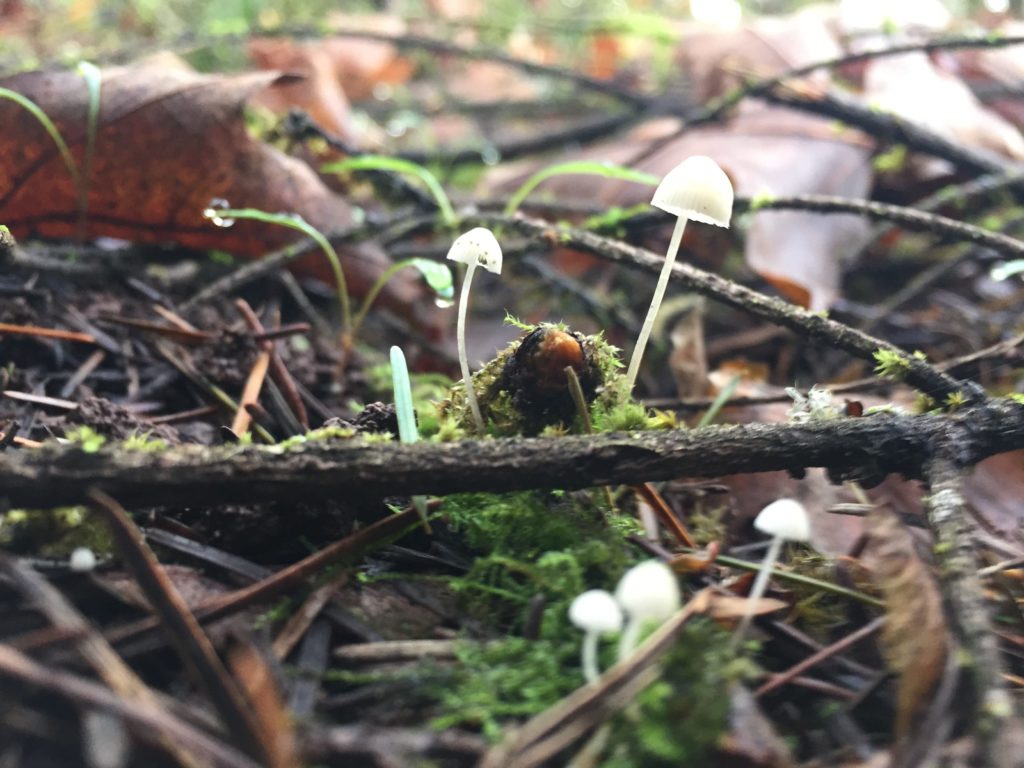
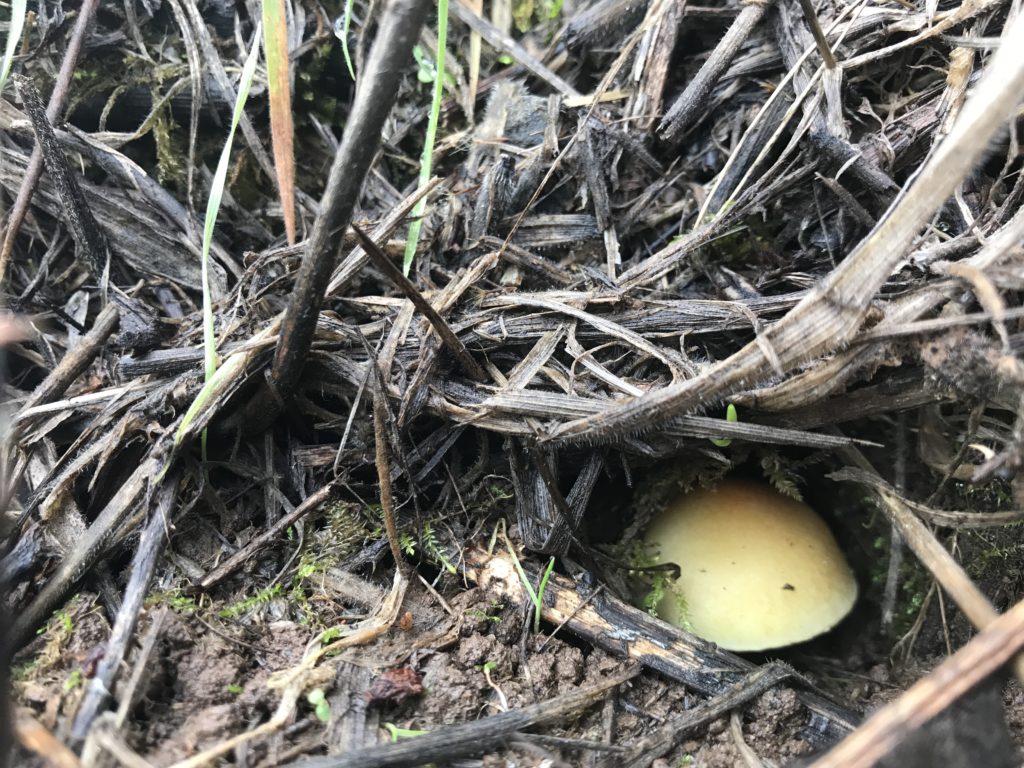
Step outside for a turn about the winter landscape with fresh eyes and within moments you will be humbled by the worlds contained within, beneath, and above our own limited perspective. However grey the ground may appear as the previous summer’s plants break down, upon closer inspection you see it is teeming with the organisms that hasten these processes, the detrital feeders, saprophytic fungi, and slime molds.
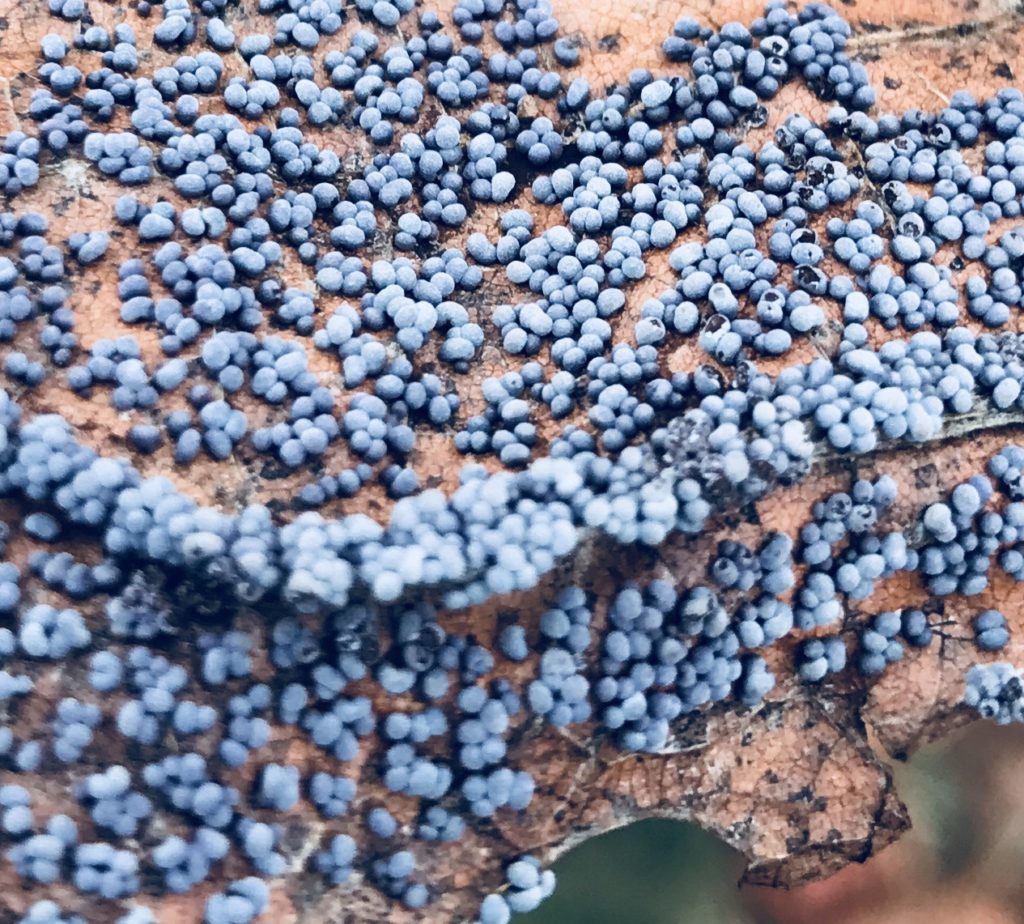
If you’re looking that close, you will see the very earth rising up, pushed heavenward by the fruiting bodies of thousands of fungi, their underground networks recycling the minerals that will feed the roots of all the plants they colonize. Even the most unsuitable, the most forbidding substrate becomes the purchase of some new life.
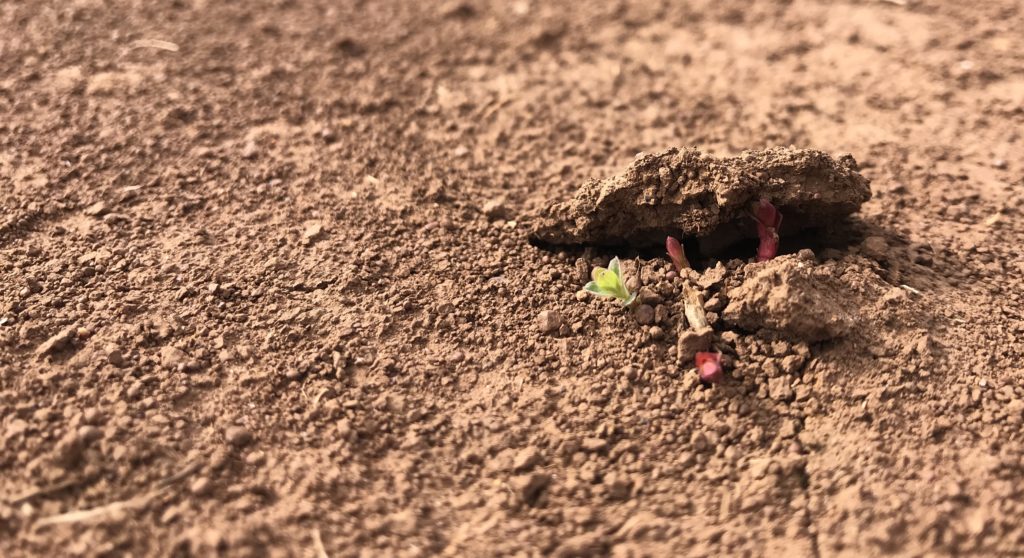
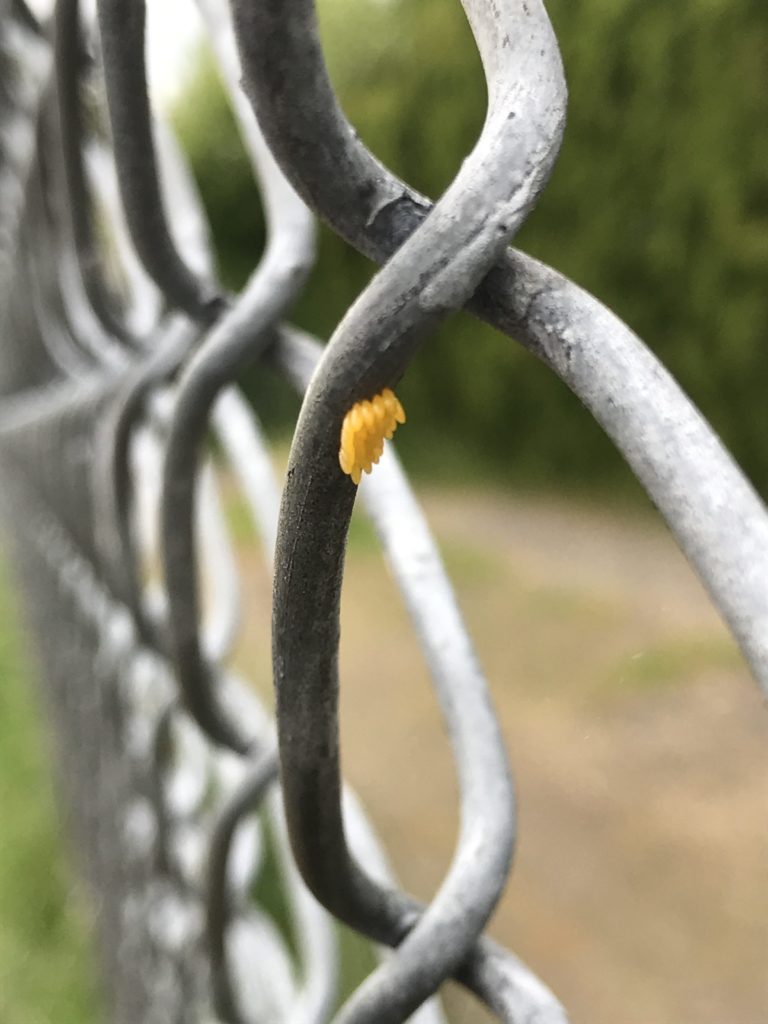
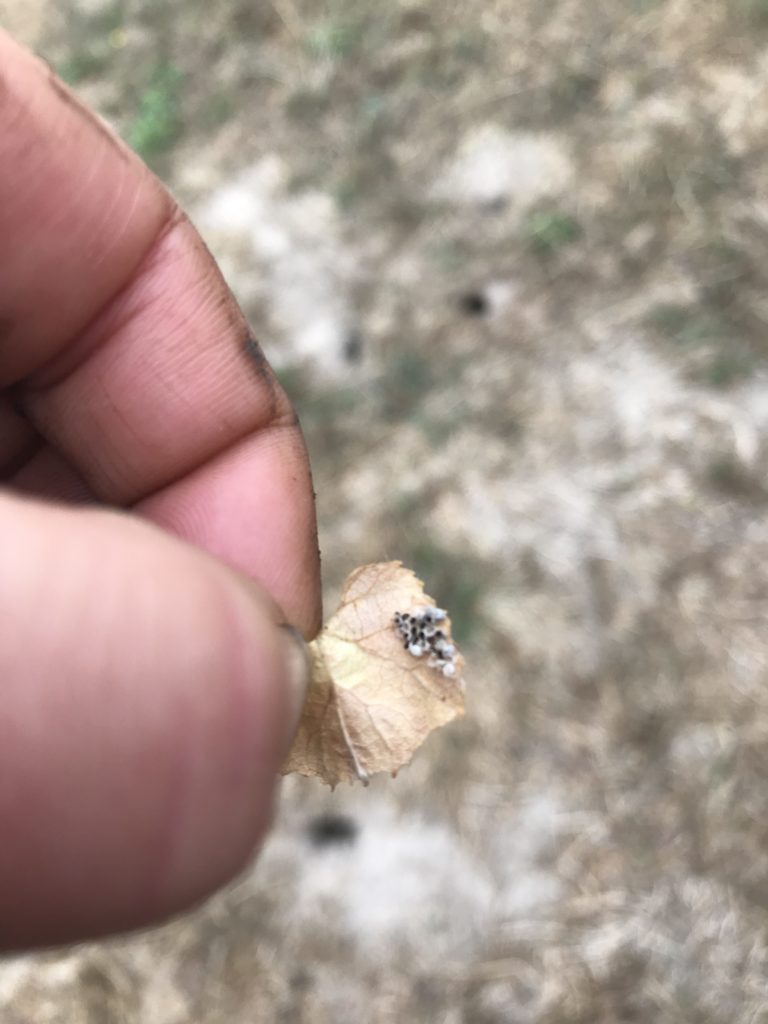
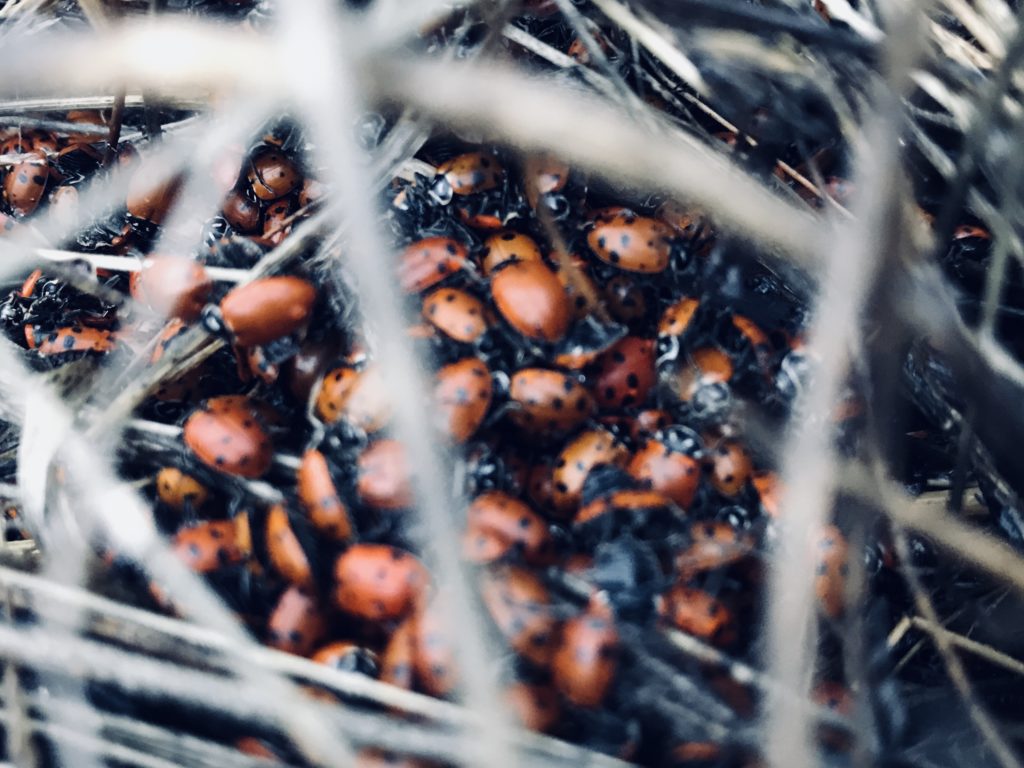
Amongst the Seussian fungal forms you will see, where the detritus meets the rich and fragrant earth, the layer of green that is making the most of the brief sunlight. Even the most compacted ground cannot resist the relentless effervescence that emerges beneath.
The brief fluctuations of winter sun and precipitation even allow a few flowers to bloom here and there, and if you find some and look closely you will see that in winter these are universes unto themselves, sustaining any number of organisms with everything they need to stay alive for just a few more weeks. A spider need only bide her time in one of these oases, her world complete with buffet and tuffet alike.
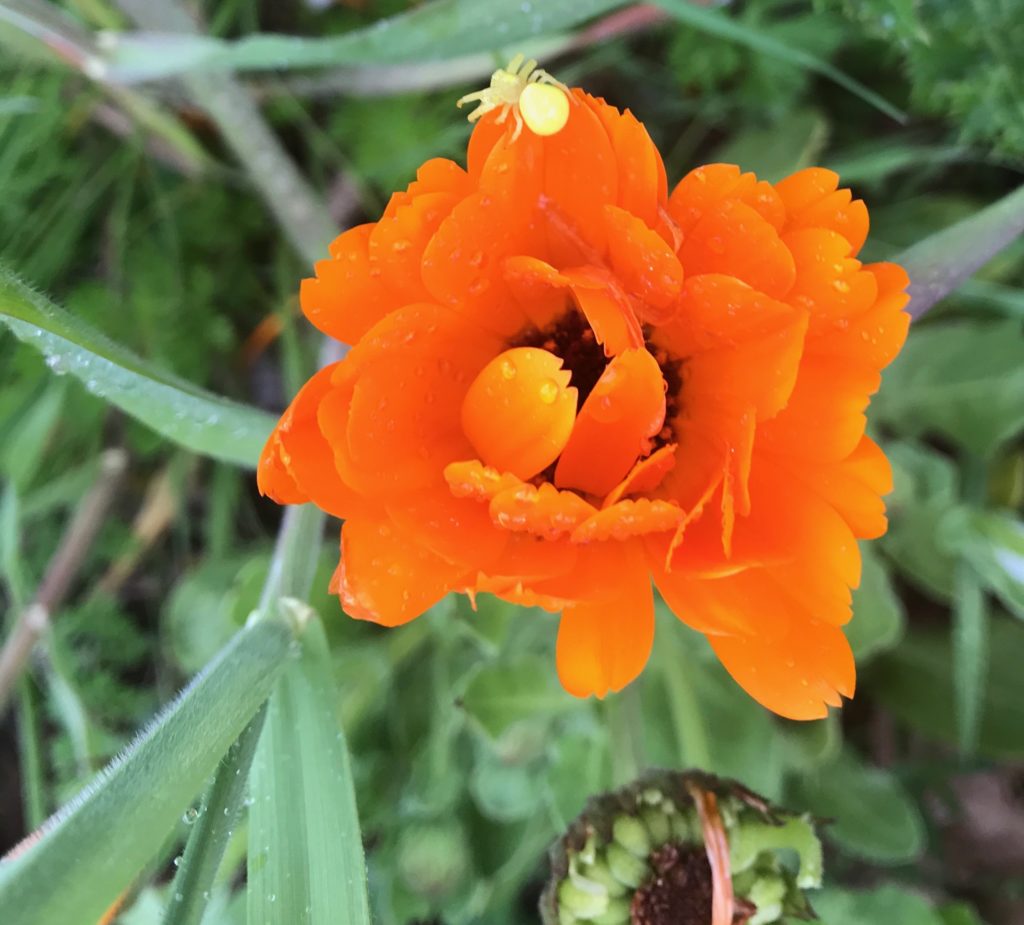
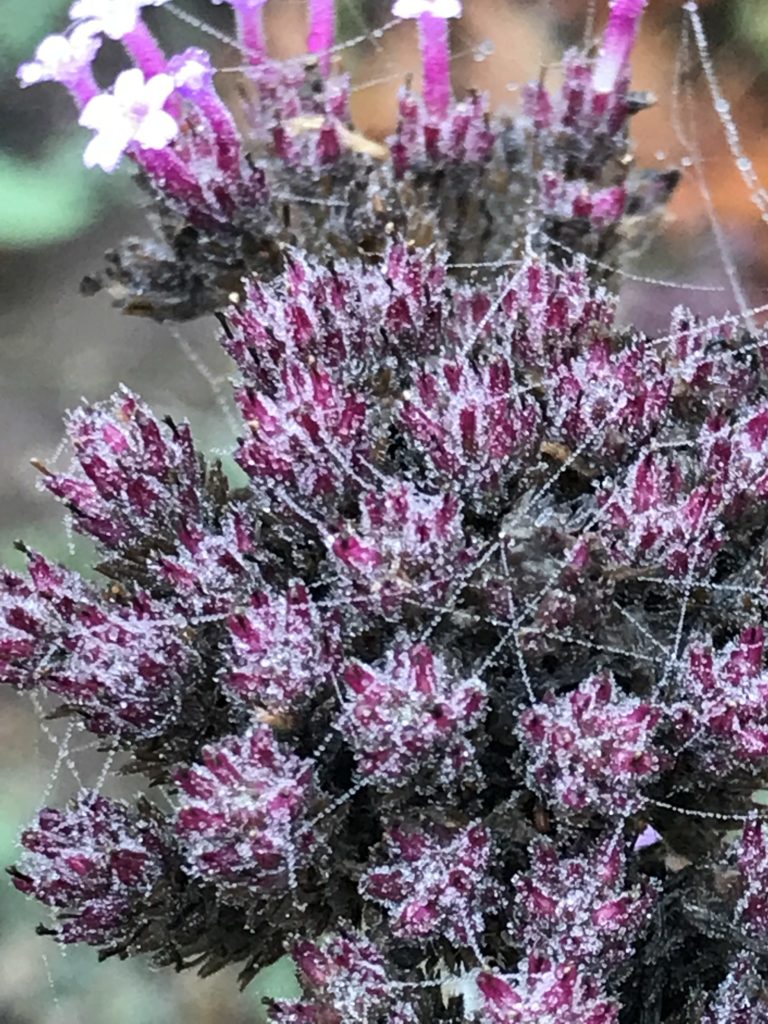
And on this optimistic carpet of green beneath grey? An attentive and cautious walker may cross the path of a purposeful newt, having just deposited a blob of eggs in a wet puddle or gravelly stream bed. She has to pick her way amongst the dead blades of grass, where the alien-like egg case of a praying mantis awaits the signal for emergence.
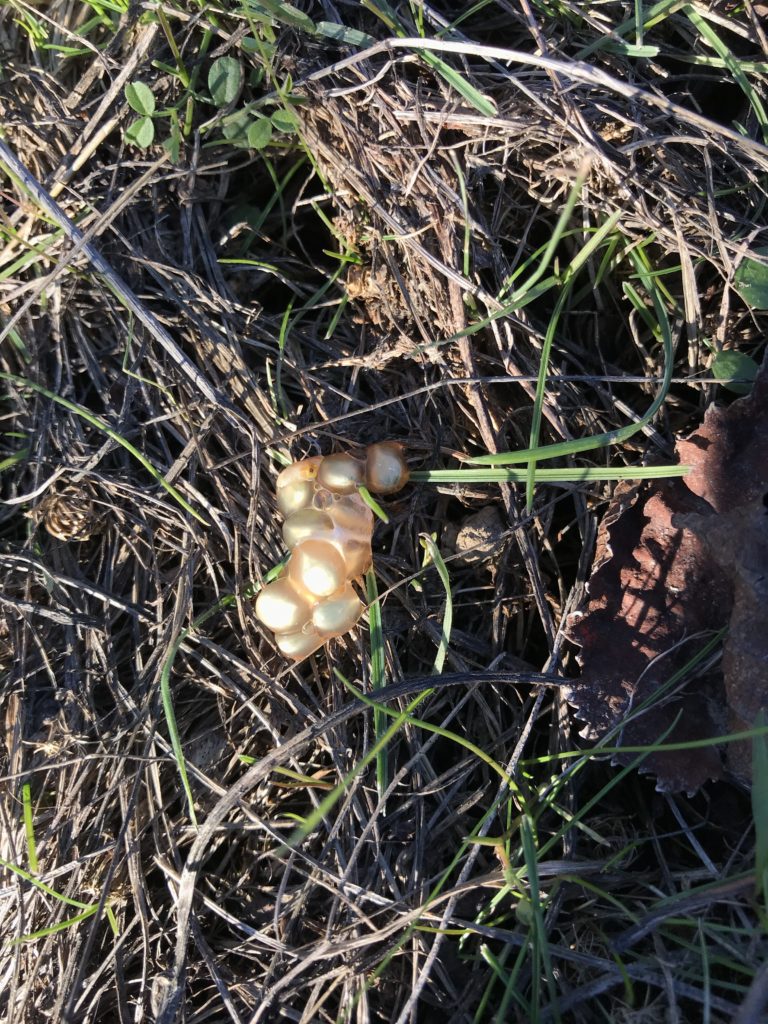
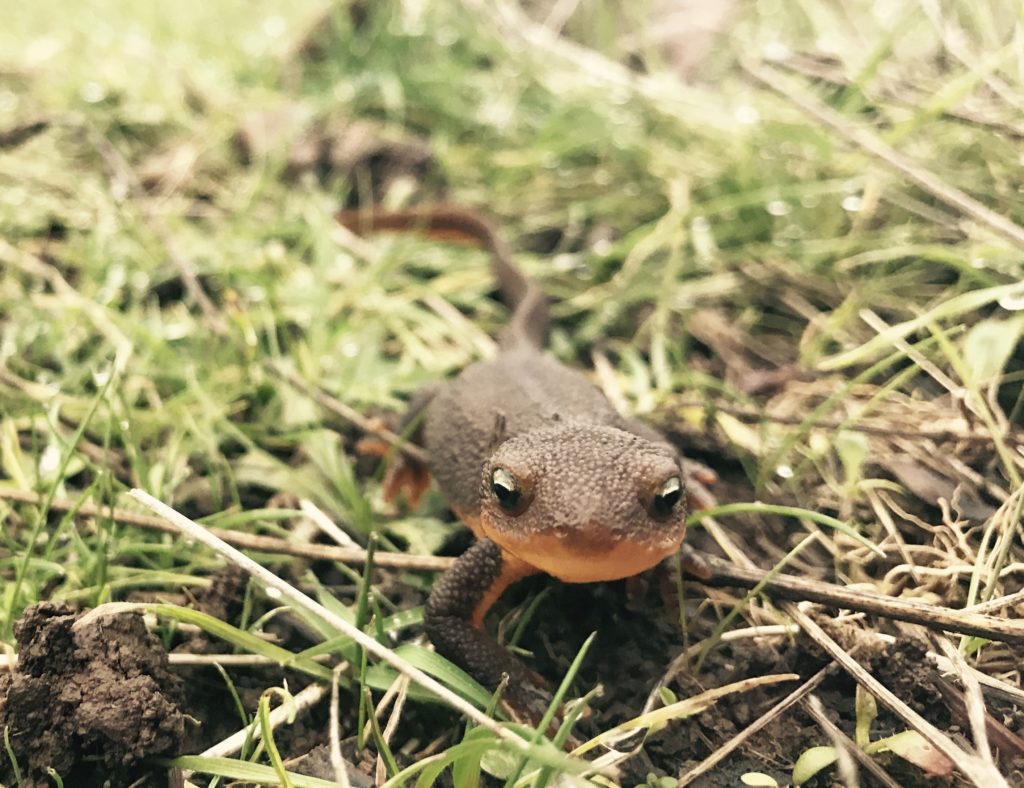
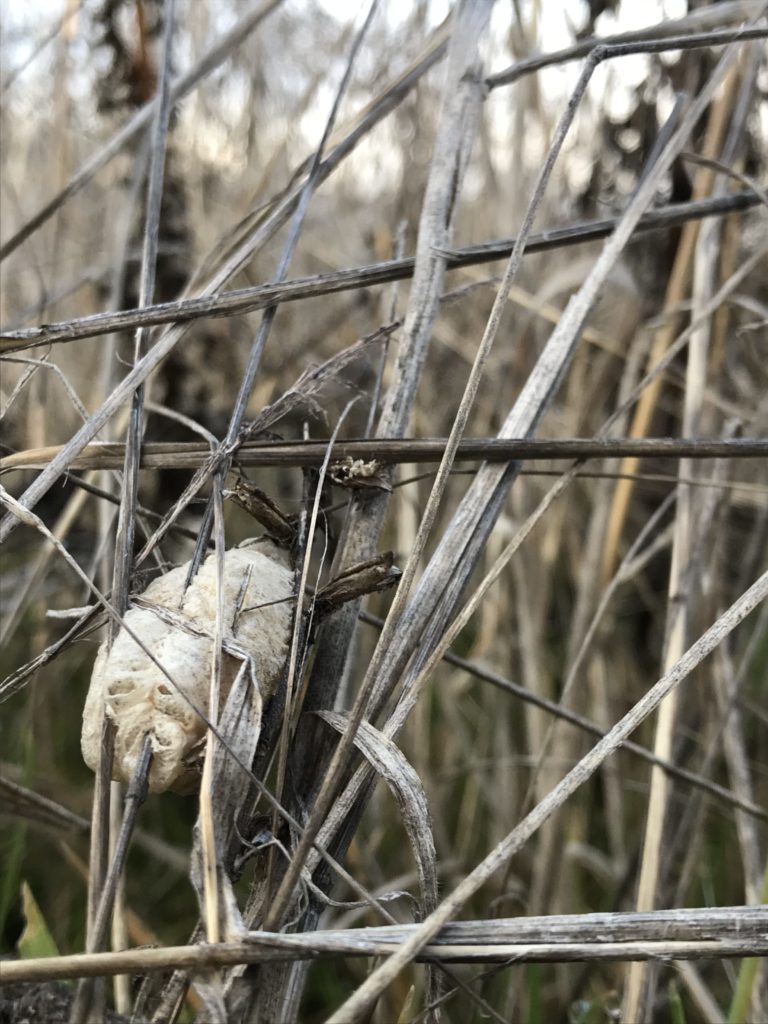
Winter. Not so bleak after all, is it?
Even as we spin out our own demise in our poignantly self-interested pursuit of growth, our justification for ruination being our innate ‘specialness’ and our unwavering confidence in our future boot-strapping ingenuity to ‘figure it out,’ even now beneath our feet, in the polluted waters, in the abused soils, in our violent climate, nature tirelessly spins out the mechanisms of repair. For all our wanton destruction, in the rearview our time ends with just another collapse of biological diversity, as has occurred before, history repeating. Even the blockbuster extinction of the dinosaurs pales in comparison to the great extinction event of the Permian-Triassic, when nearly 90% of species went extinct.
Each collapse is a question posed, creating the opportunity for a magnificent and triumphant radiation of biological answers, as has occurred before, history repeating. Even this present collapse that we are witnessing daily, the most rapid extinction event in the history of our world, will not be a hard stop. The substrate that remains, however forbidding, will be the starting ground for another great rebuilding.
With any imagination, one can see the future on a random walk through the winter landscape. You can almost push your finger through the membrane of time and touch it. The bacteria and phage that have persisted through every challenge for thousands of millions of years, may well be the only life left to carry on the business of taking the building blocks of air and rock and carving out new niches, swapping genetic information, generating organic molecules.
And if, somehow, any seeds or spores are conserved in the wreckage, the weeds we scorn for resisting our most powerful chemistries may in fact be the first to colonize the scarred crust, their tenacity and strategies honed by the war we waged against them. They will make hay on the landscape as they did behind the plow, after the excavator and the chemical cocktails we layered upon them. They will cycle nutrients and die, leaving new substrates and more niches in which sex and circumstance will generate more and less successful organisms to be selected through survival, and so on.
The beauty of this is the certainty that life cannot help but raise its hand in answer to even the most impossible and unlikely scenarios posed by the physical and the chemical. Winter is just the forced slowing down that gives us the opportunity to give thanks for and take lessons from it.
Winter. When else can we see more clearly the overlapping cycles of matter, of energy, of life? When else can we observe with crystal clarity the fact that there are no hard stops, that since the very first life on earth emerged, the energetic disparities that turn our globe, that move the earth, that drive our seasons, have created every opportunity that life has exploited, and that the conversation between the physical and the biological has taken us from a prebiotic maelstrom to an eden of infinite promise.
Winter can frame every painful human reality of the moment, or it can fold us back into the web of life from whence we sprang. Winter makes room for reflection, and the challenge is to overcome our human perspective, and humbly attempt to rediscover our true natures.
Participate! Hope Well, And Happy New Year All.
Mimi Casteel
